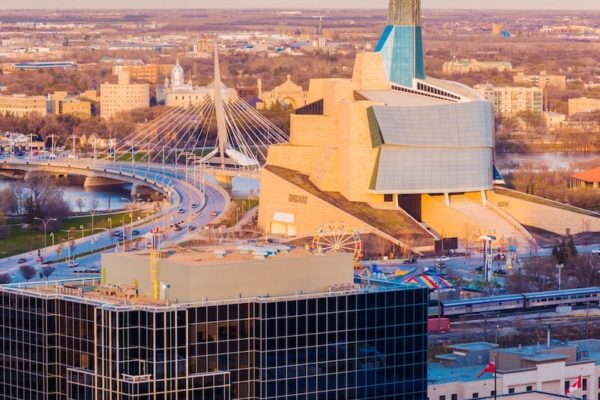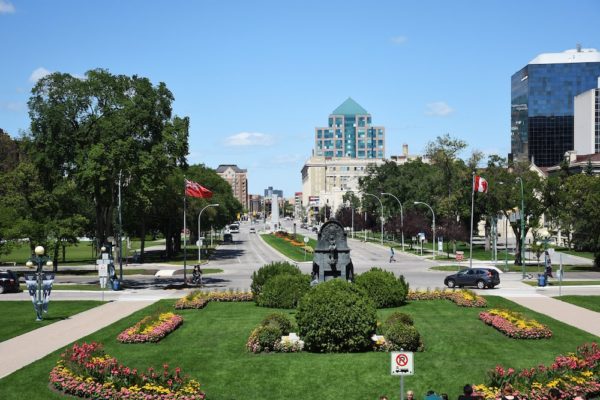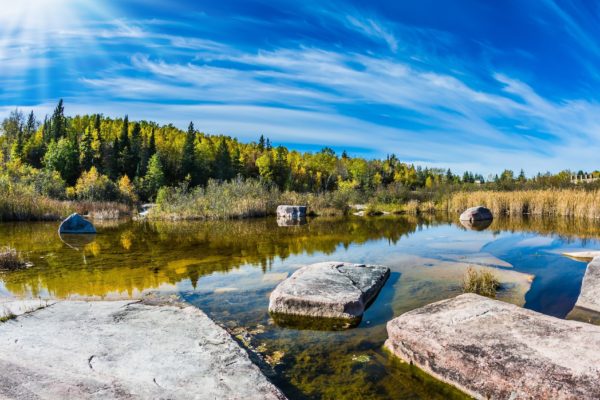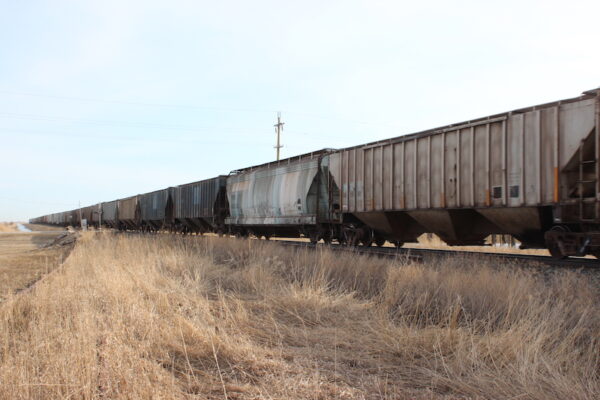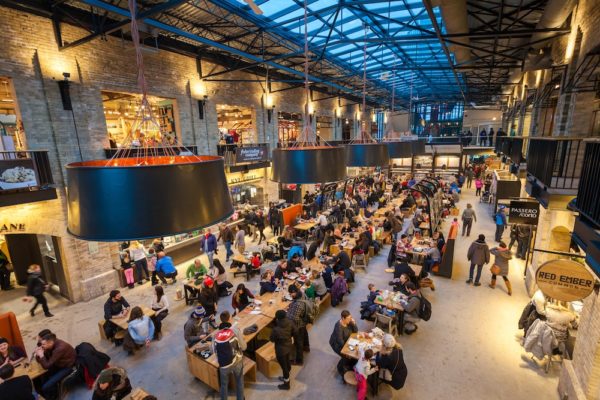Manitoba, the country where adventure begins. Where you are likely to explore much more than just the sceneries, dive deep into its rich culture and history.
About Winnipeg
Manitoba, the country where adventure begins. Where you are likely to explore much more than just the sceneries, dive deep into its rich culture and history.
In case if you are applying for the Manitoba Provincial Nominee Program for immigration, this exploratory visit would give you a chance to determine whether Manitoba is the right location for you to settle.
Be part of the spirit of Manitoba, at the heart of this amazing country of Canada – our place and yours!
Expectation from Exploratory Visits
Are you planning to immigrate to Manitoba? Are you applying for the Manitoba Provincial Nominee Program? Do you own a business? Are you thinking about expanding your business into Canada? Settling or Investing, this is the right place for you!
The Exploratory Visit is compulsory for persons interested in buying a previously established business in Manitoba or for those taking over a business in the province. The Visit is also mandatory for people who want to buy and manage a rural business or people aiming to find employment opportunities within the country.
During an exploratory visit, you’re required to:
- Visit Manitoba for at least 7 days (or longer if possible)
- Conduct as much research as possible in your industry or career
- Learn more about the potential schooling options for children, housing, and standard of living
- Meet with relevant local stakeholders, lawyers, accountants, realtors, economic development agencies, suppliers, and service providers that are directly aligned with your industry and Business Establishment Plan.
At Free People Tours, our travel experts are readily available to help you explore Manitoba, arranging the details of your visit which caters destinations and employment opportunities to explore. Our tailored tour ensures that you make an informed decision regarding expanding your business or settling in Manitoba with family, in the near future. As it is, the tour is aligned with the Manitoba Provincial Nominee Program, integrating the itinerary with the province’s special interests.
Our experts will also assist you in completing your Exploratory Visit report that is considered crucial for your success; it is your homework, your explanation and proof on how you will settle or expand in Manitoba, and it maximizes your chances to succeed.
It speaks about your work, shows your genuine intention to settle, and how you would make an economical contribution to Manitoba’s economy.
Benefits of an Exploratory Visit
This visit would leave you feeling more confident about your decision along with other benefits including but not limited to:
- Making relevant business connections
- Assistance with identifying a specific profitable business
- Establishing your business in Manitoba
And it gets even better – the provincial nominee program allocates extra points to you on the Adaptability Assessment Matrix based on the requirement of visiting Manitoba.
What is my role during the Exploratory Visit?
Let’s face facts. You’re going to want to know exactly what you should be doing when you get to Manitoba.
Here is a list of research activities that can assist you to learn more about the potential opportunities in the province:
- Identify business opportunities
- Determine the cost of buying a business
- Identify business start-up costs
- Analyze the real estate market
- Conduct competition analysis
- Conduct market research to identify your target market and audience
- Meet with a tax accountant to help with the international establishment of your business
- Meet with local stakeholders (for example, potential suppliers)
- Check out schooling options for accompanying children
- Learn more about the culture, cost of living, and lifestyle
Winnipeg’s Rich History and Ethnic Districts
Want to learn more about a day in Winnipeg? Though a single day won’t be enough.
You can visit the Royal Winnipeg Ballet “RWB” show, known worldwide for its technical excellence and eclectic repertoire. The performances range from the classics to innovative contemporary ballet. Having performed in more than 570 cities and with more than 100 performances every season, Winnipeg is proud to call the RWB their own.
Or check out the Manitoba Museum to immerse yourself within the rich history of the country. The museum itself is an award-winning heritage and edutainment center welcoming thousands of visitors each year. Diverse exhibits are held annually, in addition to its Planetarium, Science Gallery and nine spectacular permanent galleries. The world recognized exhibit, Ancient Seas takes you on a journey through Manitoba’s past, present and future.
Maybe experiencing the Wonders of Nature at Forthwhyte Alive can offer you a peek at the great outdoors and the wonders of nature when you take the Bison Safari Adventure. Not only does it showcase a 30-head Bison Prairie herd, 5 lakes, 7km of trails, Prairie Dog Town, Family Tree House, Bird Feeding Stations, Pioneer Sod House, but also offers attractions such as fishing, canoeing, hiking, wildlife watching, snowshoeing, skating, cross country skiing, and the super Richardson Run Toboggan slide, all around the year.
An interesting fact about Winnipeg – the Cree and Assiniboine-Aboriginals were among the first people to inhabit the city.
Later came the French, Scottish and Irish Settlers. During the 19th to 20th century, even Eastern European immigrants, Asians, East Indians and Caribs even flocked towards the region.
English is widely spoken among the people, however, French is just as prominent.
Winnipeg’s World-Renowned Multicultural Events
Our cultural festivals and events are bound to woo you away!
The annual Winnipeg Folk Festival features various musical artists from around the world, each July. During August, visitors and residents look forward to the Folklorama, the world’s largest multicultural festival – celebrating 45 ethnics groups over two weeks. Volunteers combine traditional dancing, singing, storytelling, artisan crafts, ethnic cuisine, and hand-made products to produce a magnificent sight.
Taking Winnipeg as a small city would be wrong due to its diverse and rich culture. You can easily find a reflection of the Filipinos, Belgians, and Paraguayan heritage. Even the core of Manitoba’s francophones is inhabited by the descendants of the fur trades from Quebec and Europe. Called as Franco-Manitobans, they made lasting relationships with the Indigenous people, contributing towards the area’s history and culture.
The Theatrical Walking Tour, In Riel’s Footsteps (St Boniface Cathedral’s cemetery) is just one of the examples of how they have preserved their culture. The production takes place frequently during the summer, elaborating the tale of French-speak heroes such as Louis Riel. He was an advocate for the rights of French-Aboriginal residents. While Riel is still controversial, he’s also considered the founder of Manitoba.
The Forks National Historic Site is also located near the St Boniface Cathedral. Known for a popular meeting point for Winnipeggers, during the summer, local street performers organize busk stops while people walk nearby.
You can even find interpreters dressed in costumes, speaking of the 18th century lifestyle led by the people of this region. Disseminated by the Parks Canada Agency, their stories include catastrophic life events about arrangements made between Hudson Bay and eastern government officials.
When feeling like entertaining yourself you can visit the Leo Mol Sculpture Garden and the Lyric Theatre bandshell, which is usually buzzing all summer offering free of cost concerts.
The Assiniboine Park Zoo is also located within its grounds and is home to a wide variety of animals, flora, and fauna. Watching majestic aquatic mammals dive, swim and frolic above you through the exhibit’s glass dome will take your breath away, while the vast terrain also features an incredible selection of animals like muskox, wolves, moose and seals. The zoo also features uber-rare animals like red pandas and snow leopards, along with over 200 other species.
For our US visitors, Winnipeg offers an easy way to experience global cultural diversity without even having to jump on a plane.
Neighborhoods
Like each country, we are also surrounded by some beautiful communities.
The French Quarter
Pass over the spectacular Esplanade Riel Pedestrian Bridge and you’ll find yourself in St. Boniface, home to one of the largest francophone communities, west of the Great Lakes and birthplace of Louis Riel.
St. Boniface is truly reflective of its French heritage. Here you can stroll along le boulevard Provencher while stopping in boutiques and quaint cafes along the way.
St. Boniface Cathedral is the oldest cathedral in western Canada, founded in 1818. The building was considered Manitoba’s best example of the French Romanesque architecture, but it has been rebuilt on several occasions due to fire.
Set in a pleasant park, the cemetery is Western Canada’s oldest Catholic burial ground. It has many old gravestones of the first settlers and key figures from days long past, including the grave of Louis Riel.
The St. Boniface Museum, the oldest building in Winnipeg, was constructed in 1846 for the Grey Nuns and was the first convent, hospital, girls’ school, and orphanage in the Canadian West.
Riel House, another French heritage present in Winnipeg, belonged to Louis Riel’s family and has been restored to reflect the social, economic, and cultural realities of life for the Lagimodière and Riel families in 1886. The house, in the Red River frame-style, is typical of early settler homes in the Manitoba region. Riel’s descendants lived in this house until 1969.
This district has the biggest French-speaking community in Canada except for Quebec, referred to as Winnipeg’s French Quarter. Even stop signs are written in French. Imagine being in France but instead in Canada.
Close to St. Boniface is the Esplanade Riel. The area is laden with a rich history, filled with museums that portray Louis Riel’s gravesite, has Provencher Boulevard and Marion Street – St. Boniface’s two main drags.
It has some of Winnipeg’s best French bakeries and cafes. Several of the them actually migrated from France.
One of the main festivals of St Boniface is the Festival du Voyageur. It’s the largest annual winter festival in Western Canada, held in February at Fort Gibraltar.
St. Boniface has several terrific residential districts – Norwood beside the Red River, St Leon Gardens and North St. Boniface in the middle of the Red and Seine River. The Seine River is encompassed by lush parklands, including the popular Bois-des-Espirit with its bountiful wildlife and fanciful carvings.
The further you head toward the south, the bigger the suburbs. This includes the budding and costly Sage Creek along with Island Lakes, a relatively new neighborhood. Several superior golf courses are also located in the area, such as Niakwa and Southland.
Aside from St. Boniface, there are several other areas of Franco-Manitobans close to Winnipeg.
Some of the sub neighborhoods include Central St. Boniface, North St. Boniface, Norwood, Archwood, Dufresne, Holden, Island Lakes, Maginot, Niakwa Park, Niakwa Place Royal Wood, Sage Creek, Southdale, Southland Park and Windsor Park.
China Town
The city has a small China town, established in 1909, with official designation in 1968, having a few grocery stores and restaurants. It is located north of Winnipeg City Hall bounded by Main street in the East, Princess Street in the West and Logan Avenue in the North.
Most of the soup kitchen and missions in the street are sponsored by our China Town. The town even has a Chinese Community Center, whereas other developments and infrastructure reflect the vibrancy of this neighborhood.
The Chinese community has always been an integral and significant part of the multicultural make up of Winnipeg. The first Chinese settlers came by stagecoach in 1877, numbering 200 by 1901 and growing to over 20,000 people today.
Learn about Winnipeg’s unique Chinese heritage, ethnic cuisine, and culture through a walking tour that shares knowledge of the history and culture of the Chinese community and how it influences Winnipeg, till date.
Find more at: https://wcccc.ca/
Little Italy
With time, a lot of ethnic communities in Winnipeg have voiced their cultural differentiation. The Italian Community is a strong example where they utilize their resources to advance trade and tourism within the city.
Corydon Avenue, gaining its name as Little Italy from the latter half of the eighties, has become a popular shopping and recreation spot for Winnipeggers. The city attracts the promotion of a variety of Italian products, creating a European atmosphere.
Little Italy has transformed this average commercial area into a buzzing destination.
Residents and visitors alike partake in this district’s retail offerings.
Italians migrated to North America and the city of Winnipeg during the 20th century. Since then, they preserved and enhanced their traditional customs in a multicultural society and continued to fortify the village and regional alliances via interacting with other members of the same ethnic background.
During the 1970s, many Italian businesses slowly entered the area, continuing the trend through the eighties. The evolution of new shops was owed to the growing wealth of Winnipeg’s Italian population. Closer to the nineties, more visitors from other residential communities and surrounding rural boroughs came to Corydon Avenue. Merchants figured out their target audience came from Winnipeg’s suburban and exurban residential communities, labeling and promoting the Avenue as a Little Italy.
From our history, one can tell that Little Italy has a rich reflection of the Italian culture. So, it’s expected that you’re going to find delicious, ethnic Italian cuisine here. Our gelato is without a doubt the best that you will find aside from New York’s or San Francisco.
Ukrainian Neighborhood
The Ukrainian community, or the Ukrainian Labor Temple National Historic Site is located in a residential neighborhood, comprising of modest homes in the center of the North End area of Winnipeg, Manitoba. The refined early twentieth-century building highlights a commanding temple-like external structure with neoclassical features such as a substantial eave, limestone banding, plinths, pilasters and grandeur keystones.
Its construction took place during early 20th century, being the heart of a social change dedicated to bettering Ukrainian employees’ lives. The Temple was once a head office for many organizations committed to serving Ukrainians while also serving as a foundation to advertise Ukrainian performances. Strikers even used it as a meeting plan during the Winnipeg General Strike of 1919 and for the Communist Party of Canada up until the 1950s.
It continues to serve, till date, as a cultural function, representing the Ukrainian heritage.
Prepare yourself and Sign Up!
Point Douglas
An adventure that tells the ancient history of Winnipeg – exploring the lifestyle of the people who reside and make a living in its off-the-record economy. A walking tour in Point Douglas, one of Winnipeg’s oldest neighborhoods – now a designated National Historic Site of Canada –located outside of downtown, north of the iconic Portage and Main Intersection, past the Woodbine Hotel and into the Exchange District, entering the city’s oldest hotel reflecting its history, exploring the lifestyle of the people who reside and make a living in Winnipeg’s off-the-record economy.
Point Douglas has beautiful character homes, high rise apartments and a great location that is steps away from the Exchange District with restaurants, cafés and theaters adding so much vibrancy. The area has historically had a large Indigenous population and to celebrate this you see many striking murals that depict its Indigenous roots.
Point Douglas neighborhood did fall on some harder times. Beginning in 1909, Annabella Street became designated as the City’s segregated Red-Light District. This was not the first time that a “Red-Light” district had been established in Winnipeg. Originally, there was a “Colony” of brothels – along Colony Creek (what is now the section of Balmoral Street, between Ellice Avenue and Qu’appelle Avenue). With the construction of Manitoba College nearby, resulting in a little too much attention paid to the brothels by the upstanding young college students, a new colony was set up a mile to the west – outside the new city limits on what is now Minto Street (known then as Thomas Street).
Once again, the city expanded out to their new location, causing renewed friction with temperance groups. A morality crusade in 1904 forced the police to raid the Thomas Street brothels and shut them down. However, far from eradicating the problem, the police found that this simply spread the problem around by scattering the prostitutes all over the city. In 1904, an angry citizen complained in the Winnipeg Free Press that there was a growing number of attacks on innocent women in the city streets, which was a direct result of uncontrolled prostitution.
By 1909 things had gone from bad to worse and Magistrate T. Mayne Daly, along with the Winnipeg Police Commission, recommended that the Chief of Police (J.C. McRae) deal with the problem “in accordance with his discretion and best judgment”. As a result, Chief McRae consulted Minnie Woods – a leading madam of the day – to come up with a new Red-Light District. The Point Douglas site was chosen for its inexpensive houses, close proximity to the CPR station (a good source of clientele), and its relative isolation.
Annabella Street, the unofficially designated City’s Red-Light District in 1909. Taken place as a compromise between a few political leaders and the Chief of Police, their aim was to differentiate the vice from the established Winnipeggers.
Living in 1909, you could have experienced the area buzzing with more than 50 reported brothels.
Despite the controlled activities – loud music, distinctive markings, bright lights, medical examinations every two weeks, leaving the district with prior consent, the brothels yet faced opposition by the morality groups.
An article in the Toronto Globe by Dr. J. G. Shearer, General Secretary of the National Moral and Social Reform League even identified Winnipeg as having the “rottenest conditions of things … in connection with the question of social vice to be found in any city in Canada” when these brothels were still alive.
By 1954, the moral police had chased away the red-hot mamas, disappearing from the directory and the memory of our people.
Learn more about the city’s most disorderly bar, the infamous red-light district while meeting an original resident of Annabelle Street to listen to a first-hand account, reliving the city’s most notorious red-light district in its older vibe.
Visit Winnipeg’s newest burlesque troupe for 18+ ages
Recreation and Tourist Attractions
Travel Manitoba, located at The Forks — a prominent Winnipeg tourist attraction — has all the information you need on things to do and places to go in Manitoba.
To find out more, visit: travelmanitoba.com.
Usually, arriving in Manitoba you would also find our people ecstatic and eager to direct you towards our famous attractions.
Historic sites such as Lower Fort Garry and The Forks; professional and amateur sports events; city, provincial and national parks; and natural areas are among Manitoba’s and Winnipeg’s attractions. Major attractions outside of Winnipeg include the beaches of Lake Winnipeg, the lakes and forests of Whiteshell Provincial Park and Riding Mountain National Park.
No matter what recreational activities you pursue, you are sure to enjoy our mesmerizing natural environments, unique cultural sites, sandy beaches and clear waters.
Cultural Attractions and Events
The City of Winnipeg and Manitoba in general have a wide variety of cultural attractions and festivals. An excellent way to learn more about Canada and to improve your knowledge of the English language is to experience our music, art, theatre, dance, and history.
Famous cultural attractions in Winnipeg include the Royal Winnipeg Ballet, the Winnipeg Fringe Festival, the Manitoba Theatre Centre, Prairie Theatre Exchange, Winnipeg Symphony Orchestra, Folklorama, Festival du Voyageur, the Winnipeg Art Gallery and the Manitoba Museum.
Special events across Manitoba include
- Royal Manitoba Winter Fair and Manitoba Summer Fair in Brandon (focusing on Manitoba’s agricultural heritage)
- Dauphin Country Fest (showcasing the top country music performers in the world)
- Manitoba Highland Gathering (a festival of Scottish heritage with dance, pipe and drum competitions, heavy games of brawn, sheep shearing and herding)
- World Lily Festival (flower show) in Neepawa
- Manitoba Stampede in Morris
- Manitoba Icelandic Festival in Gimli.

